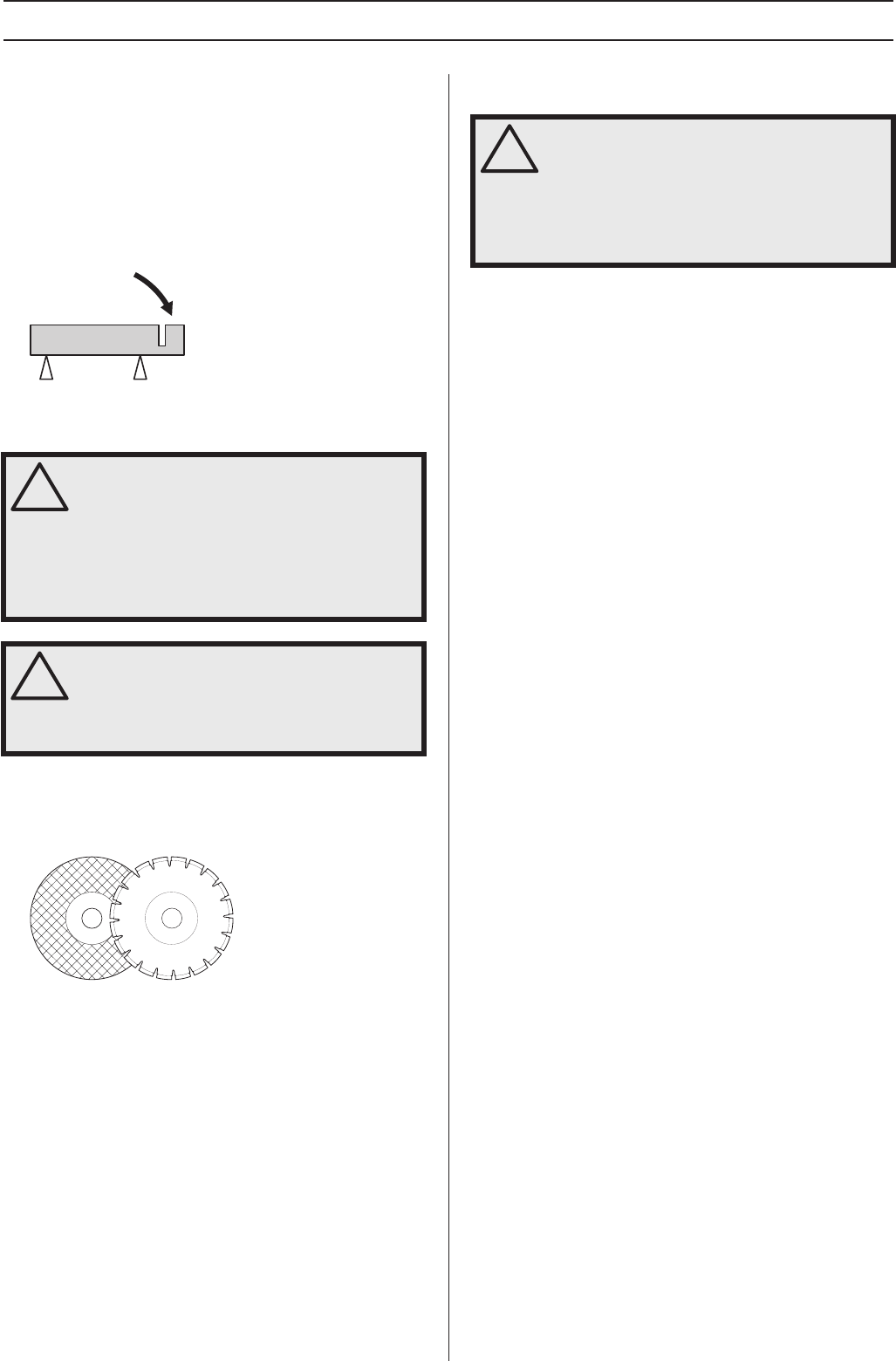
English
– 11
SAFETY INSTRUCTIONS
Pinching/rotation
If the cut is pressed together this can lead to jamming. The
machine can be pulled down suddenly with a very powerful
jerk.
How to avoid pinching
Support the work piece in such a way that the cut remains
open during the cutting operation and when the cut is
finished.
Cutting blades
General
Cutting blades are available in two basic designs; abrasive
discs and diamond blades.
Always remove the cutting blade when the machine is
transported.
Make sure that the right bushing is used for the cutting blade
to be fitted on the machine. See the instructions under the
heading Assembling the cutting blade.
High-quality blades are often most economical. Lower quality
blades often have inferior cutting capacity and a shorter
service life, which results in a higher cost in relation to the
quantity of material that is cut.
Water cooling
After using an abrasive disc with water cooling, run the disc
dry for about half a minute. If an abrasive disc is stored in
humid conditions, this can cause imbalance and result in
injury.
High speed handheld machines
Our cutting blades are manufactured for high-speed, portable
power cutters. If blades from other manufacturers are used,
ensure that the blades conform to all regulations and
demands that concern this type of power cutter.
Special blades
Some cutting blades are designed for stationary equipment
and for use with attachments.Such cutting blades must not be
used on portable power cutters.
Always contact local authorities and make sure you are
following applicable directives.
!
WARNING! A cutting blade may burst and
cause injury to the operator.
Never use a cutting blade at a lower speed
rating than that of the power cutter.
Never use a cutting blade for any other
purpose than that it was intended for.
!
WARNING! Cutting plastics with a diamond
blade or rescue blade can cause kickback
when the material melts due to the heat
produced when cutting and sticks to the
blade.
!
WARNING! Water cooling, which is used
when cutting concrete, cools the blade and
increases its service life while also reducing
the formation of dust. Disadvantages include
difficulties at very low temperatures, the risk
of damaging floors and other structural
elements, and the risk of slipping.


















